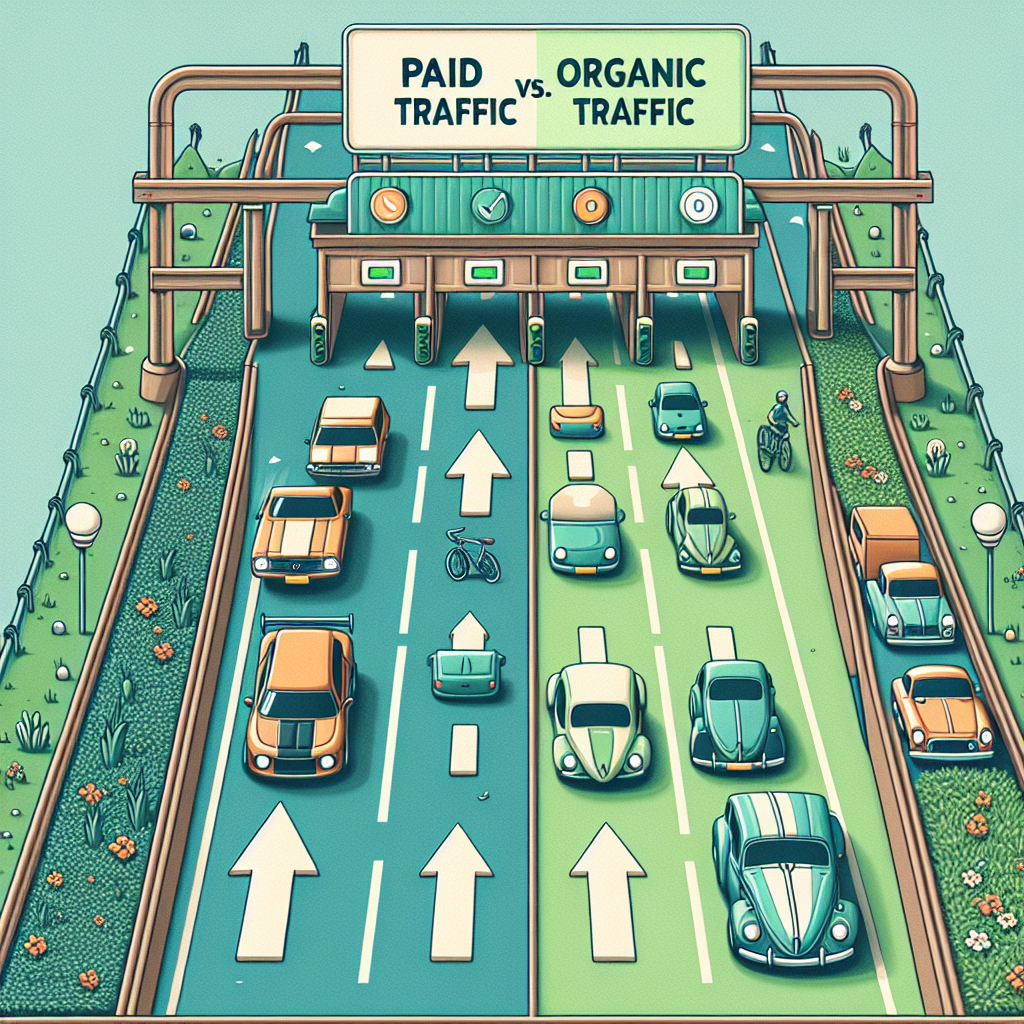Title: Paid vs. Organic Traffic: What’s Best for Your Website?
In the world of digital marketing, driving traffic to your website is the key to increasing brand visibility, generating leads, and converting sales. Two primary methods to achieve this are paid traffic and organic traffic. Each has its own merits, challenges, and suitable applications. But which one is best for your website? Let’s dive into the intricacies of paid and organic traffic to help you make an informed decision.
Understanding Paid Traffic
Paid traffic refers to visitors who come to your website through paid advertising campaigns. These can include Pay-Per-Click (PPC) ads, display ads, social media ads, sponsored content, and more. The most popular platforms for paid traffic are Google Ads, Facebook Ads, Instagram Ads, LinkedIn Ads, and Twitter Ads.
Advantages of Paid Traffic
-
Immediate Results: Paid traffic can deliver instant visibility and results. The moment your ad goes live, you start receiving traffic.
-
Targeted Audience: Most platforms offer sophisticated targeting options based on demographics, interests, behaviors, and more, ensuring your ads reach the right audience.
-
Scalability and Control: You have complete control over your budget and can easily scale your efforts up or down based on performance metrics.
- Enhanced Tracking and Analytics: Paid campaigns come with detailed analytics, allowing you to track Return on Investment (ROI) and adjust your strategies in real-time.
Disadvantages of Paid Traffic
-
Cost: Paid traffic requires a financial investment that can be substantial, especially in competitive industries.
-
Temporary Benefits: Once you stop or pause your ad campaigns, the traffic stops as well.
- Ad Fatigue: Users may become desensitized to repetitive ads, leading to a decline in click-through rates over time.
Understanding Organic Traffic
Organic traffic consists of visitors who find your website naturally, often through search engines like Google. This type of traffic is usually driven by SEO (Search Engine Optimization) strategies, content marketing, social media activity, and backlinks from other websites.
Advantages of Organic Traffic
-
Cost-Effective: Organic traffic generally doesn’t require direct financial investment, making it a more sustainable long-term strategy.
-
Long-Term Results: High-quality content and effective SEO practices can drive consistent traffic over time, even if your efforts pause temporarily.
-
Credibility and Trust: Websites that rank high organically are often perceived as more credible and trustworthy compared to paid listings.
- User Engagement: Organic traffic often results in better user engagement and lower bounce rates, as users actively seek out content relevant to their needs.
Disadvantages of Organic Traffic
-
Time-Consuming: Achieving substantial organic traffic can take months or even years of consistent effort.
-
Algorithm Dependency: Organic traffic can fluctuate based on changes in search engine algorithms, which are beyond your control.
- Limited Control: Unlike paid traffic, you can’t control who sees your content directly, making targeting more challenging.
Choosing the Best Option for Your Website
The choice between paid and organic traffic ultimately depends on various factors such as your business goals, budget, target audience, and timeframe. Here’s how to decide:
When to Choose Paid Traffic
- Immediate Results Needed: If you need quick visibility, perhaps for a product launch or a limited-time offer, paid traffic is the way to go.
- Specific Targeting: When you want to target a very specific audience segment based on detailed demographics or behaviors.
- Competitor Saturation: In highly competitive niches where organic rankings are tough to achieve, paid ads can offer a competitive edge.
When to Focus on Organic Traffic
- Long-Term Strategy: If you’re looking to build sustainable, long-term growth, investing in SEO and high-quality content is advisable.
- Budget Constraints: For startups or small businesses with limited marketing budgets, organic methods can be more cost-effective.
- Building Credibility: Organic traffic helps build trust and credibility over time; essential for industries where consumer trust is a key factor.
Conclusion
Both paid and organic traffic offer unique advantages and challenges. An effective digital marketing strategy often involves a balanced mix of both. Paid traffic can provide immediate results and highly targeted leads, while organic traffic offers long-term benefits and builds credibility. By understanding the nuances of each, you can craft a strategy that optimally meets your business objectives.
By evaluating your specific needs and resources, you can make an informed choice, ensuring that your website grows effectively and sustainably.
